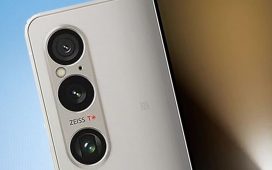Craving what we don’t have has been a compulsion long before the surge in social media marketing-fueled consumption. Once upon a time, our material desires were cultivated through in-person interactions, in-store shopping, or word-of-mouth. Not long after, face-to-face became face-to-catalog, with consumers flipping endlessly through product pages, before television ads intensified their appetite for more, using fictional characters and celebrity actors as aspirational models for who the customer could become. Then came the internet, setting the stage for E-Commerce domination, in which instant gratification features like affiliate links and expedited search fed into budding shopping addictions.
Nowadays, the lust for clothing items, beauty products, and wellness supplements is mixed with a fascination in the lives of people online with millions of followers who agree a person they’ve never met is trustworthy and intriguing. They’re Instagram and TikTok famous, but they’re not exactly A-listers. They share everything from aspects of their day-to-day to details on their outfits, all while contributing to a stream of short-form video clips and photo logs. They’re privy to the dynamics of elite social clubs with exclusive invites to brand events, fashion runways, movie premieres, and music festivals. They’re people who inspire creativity but more so motivate imitation. These are the influencers; the individuals paid to feed a mass of hungry consumers.
Influencers have been around long before the term was coined, predating the digital platforms where they currently thrive. In the past, they came in the form of it-girls and royal favourites, they were the tastemakers of their time and dictators of what was en vogue.
”We’re in this age of the influencer,” psychologist Dr Chez Leeby told The Independent. “They’ve always been there but in different ways, degrees, and outlets.”
However, she argued that since influencers now have a direct line with their audiences – rather than having to resort to going through media outlets to connect with the public – their impact has become far more intimate and personal than ever before. This phenomenon dates back to 1956 when researchers Ronald Horton and R Richard Wohl coined the term “parasocial relationships” after they observed that the public had begun to form a psychological attachment to the television personalities they were viewing.
These types of psychological attachments have increased exponentially with the omnipresence of social media in our daily lives. Parasocial relationships between audiences and influencers can be remarkably positive if the audience is in a good emotional state, with some influencers serving as role models to the communities they represent or those who aspire to emulate their lifestyles, according to the Cleveland Clinic. Some influencers approach their audiences like they’re the relatable older sibling or best friend you’ve never had, creating a dynamic that can be a safe haven in an otherwise lonely world. However, Dr Leeby added that this approach can become toxic, with audiences sometimes feeling a sense of entitlement or ownership over the influencer.
“Like anything in mental health, when it starts interrupting your everyday experience, and it becomes obsessive, which because of the way social media is designed, it can easily get that way,” she continued. Dr Leeby has observed that near-constant exposure to these influencers’ often affluent lifestyles can breed comparison and dissatisfaction, sometimes to the detriment of her patients. Those who are vulnerable – specifically those who suffer from low self-esteem, eating disorders, or body dysmorphia – may find themselves susceptible to misinformation and the perpetuation of unrealistic beauty standards.
“I have seen very, very young people unhappy with their bodies, and I never used to see that,” Dr Leeby recalled. “There were always eating disorders. There were always self-esteem issues, but now it has become this dysmorphic thing.”
She noted that these psychological attachments can be toxic to social development as well. As people tune in to watch their comfort content creators vent about their day or voice their errant thoughts to the camera, viewing their content can feel as intimate as a FaceTime call. Some may rely on an influencer’s content as a poor substitute for real interactions. “[Parasocial relationships] are replacing real connection or even the courage to have real connections,” she warned.
But it’s through these parasocial interactions that influencers can commodify basic human connection by leveraging their online personas – whether they market themselves as relatable or aspirational. Each day more and more people are turning their online presence into a business opportunity, with data indicating that more than 57 per cent of Gen Z-ers would be influencers if given the opportunity.
“It’s a lot of people’s livelihood or passion right now,” Dr Leeby said, adding that her daughter Payton – a graduate student pursuing her master’s degree – has been making an honest living throughout college as an influencer who moonlights as a live-streaming host on TikTok. For four to six hours daily, she sells bags for Wrangler and Montana West, interacting with viewers as she shows off the latest while growing her following.
This direct-to-consumer influencer model can be traced back to advertising methods as early as the 20th century, however, it wasn’t until platforms like Facebook, Twitter, YouTube, and Instagram became well-established that the effect of brand-partnered content creation soared. Anyone with a curated page, a dedicated audience, and an authentic voice was wanted by businesses to market products and campaigns to their followers in sponsored posts. TikTok took it to the next level when it became the most downloaded app in 2018. Users – small businesses and single creators – could capitalise on an algorithm that increased visibility, making it possible for anyone to become a micro-influencer with just one viral video.
From outdoor challenges to cleaning hacks, Hollywood drama, and clothing hauls, TikTok spews every kind of content. Katie Martin, executive vice president and managing director at Front Row, described TikTok to The Independent as “the world’s most crazy, awesome talent show live 24 hours a day”. And according to Martin, advertisements on TikTok perform like no other.
Unfortunately, or perhaps fortunately, that could change. On 24 April, President Joe Biden signed a piece of legislation into law, threatening the existence of TikTok in the US. The bill gives TikTok’s China-based parent company, ByteDance, nine months to sell before a ban goes into effect. Though it will likely be a year before the implications of a ban are seen, the passed legislation already puts the livelihoods of influencers and the success of businesses that depend on them in a state of uncertainty.
With over 170 million Americans using the app, the probability of the app completely disappearing is low. If ByteDance doesn’t comply with the mandated sale, realistically, TikTok won’t be able to be downloaded by new users. Additionally, updates won’t be accessible, eventually making the platform incompatible with phone software. In short, from a user’s standpoint, the ban is less disruptive. The affected are the content creators who’ve cemented a considerable portion of their careers in the continued expansion of TikTok.
It begs the question of whether or not the ban spells the death of the influencer.
Martin doesn’t think so, nor does fashion influencer Bridget Brown. Brown – a 25-year-old content creator with over 96,000 followers on Instagram and more than 240,300 followers on TikTok – found solace in social media, speaking to her camera and sharing chic thrift hauls. When Covid hit, the Ontario-based creator focused energy into posting consistently, seeking and establishing brand relationships. In four years, Brown’s presence on social media, most notably TikTok, has amassed partnerships with high-fashion companies like Fendi, Ferragamo, Acne Studios, and Coach, all while managing a second-hand vintage resale business, Augusta Vintage.
“I feel like when I started doing TikTok, that’s kind of when I felt like I found that niche, thrifting, sustainable community because TikTok is a lot more broken down into specific niches than Instagram is,” Brown told The Independent. “My following on TikTok is majority US [rather than] Canada, which is interesting because I’m based here.”
“The industry in the States is a lot bigger than it is in Canada. So it’s definitely been helpful in terms of reaching brands,” she said of TikTok. “There’s a lot of really great brands that are based in the States that have really helped me grow.”
Researchers have found that the majority of these brand partnerships are forged on the foundation of an already pre-existing symbiotic connection between companies and influencers. The right partnership can open the door to more lucrative opportunities, incentivising influencers to court brands. Brown found her career advancement and subsequent relationships with established brands conducive to a management company.
Dina Mayzlin – a marketing professor at the Marshall School of Business at the University of Southern California – noted to The Independent that she and her colleagues have found that there are predominantly two ways that companies conduct brand partnerships via TikTok.
On one hand, there’s the transparent product ad that turns the influencer into a virtual billboard for the company, and on the other, oftentimes more clandestine end of things, companies tend to encourage influencers to feign authentic and genuine reviews of products.
“The interaction is almost more of a spokesperson model versus one where there’s a little bit hands-off approach,” Mayzlin said, explaining that it depends on how established a company that affects which influencer marketing strategy they employ. Established companies are more likely to go for a scripted ad because it grants them more control of their images.
“The company may be worried more about a negative review, because kind of off the bat, the consumer is positively predisposed towards their product,” Mayzlin explained. “In that case, they might want to have a little bit more of a scripted interaction to prevent a negative review.”
However, companies do understand that consumers are more likely to gravitate towards authenticity than something blatantly scripted. Less established companies that are fresh on the scene and eager to get their brand message out there will try to aim for a word-of-mouth strategy.
“When you have something where you don’t really have a reputation, they want to review to be credible,” she said. By choosing this so-called authentic marketing model, she notes that companies are not underestimating the intelligence of consumers, they’re anticipating it. An influencer giving what seems to be an earnest review of a product helps establish brand awareness, making influencing indispensable for companies without a previously established voice or launching a brand-new product.
Generally, Brown has seen her content perform better on TikTok than on Instagram. Her promotional ads – the content contracted and approved by brands – are monetised, but the rest of her videos on TikTok aren’t. It’s important to note that some creators make money off their non-sponsored TikTok videos, therefore casting them into a different financial vulnerability with a ban on the table. Still, even for Brown, the potential ban of TikTok raises serious questions as someone fully invested in maintaining her US audience for her paid partnerships.
“If there’s no TikTok in the States, it’s kind of irrelevant to even use here because the majority of my following is US-based,” she noted. “It’s kind of scary that it might not be around. And I mean, even if it only gets banned in the States, that directly affects me.”
In the weeks that led up to the Senate and President Biden’s decision to pass the bill, content creators frantically posted “just in case” messages to their TikTok following, urging them to subscribe to their channels on other platforms while thanking them for catalysing their expansion.
This tactic, which could be considered a last-minute “ditch effort,” is a strategy encouraged by public relations lead Julie Solomon, from Next PR. Speaking to The Independent, Solomon explained: “If a TikTok ban does go into effect in the US, it will shake up the influencer marketing strategy for brands and the career trajectory for many content creators. While I don’t think influencers will disappear should this ban go into effect, they’ll need to get creative to engage a new following on existing platforms.”
A society immersed in the digital sphere won’t see reliance on social media to feed and distribute information diminish under a TikTok ban. If anything, the restriction will give way to the development of other platforms, mirroring the functions and control TikTok had and prioritising influencer marketing just in a different mode. Consumer behaviour may not be the same on Instagram or YouTube now, but Martin thinks it could be replicated.
“The most likely scenario is that it’s not banned or it’s sold and therefore the consumer and influencer experience would still be fairly seamless without interruption,” she said. Still, theoretically, if TikTok does get banned and eventually disappear, Martin predicts that “influencers are going to kind of jump to the other platforms”. Specifically, Martin sees Instagram as being the closest to TikTok, which makes her assume Instagram will assume its place.
“You would have to think that they’re working on this right now for Instagram to have the capabilities. You have to think that there would be a version that could be similar,” Martin remarked.
Brown is operating now under the same impression. “I’m definitely thankful that I’ve built a community on Instagram, like a pretty solid community there. I’ll have that option,” she said. “I think the ban would be kind of nice because it would push me to focus on Instagram Reels. Instagram is going to change when TikTok, if TikTok is banned. It’s inevitably going to change. I don’t think any of us really know how it’s going to change. It might be great. It might be awful. It’s always going to be unpredictable and it’s scary.”
She’s also advising her fellow influencers and micro-influencers to follow her lead. “Since TikTok is an easier platform to post on and to grow on, people prioritise that. But if their priority shifts to Instagram, they might see a similar outcome. It’s just going to be a matter of pushing out as much content as possible, but obviously in a genuine and authentic way,” she suggested.
Martin and Solomon are encouraging their clients to adjust their influencer contracts. And Solomon is urging companies to add precautionary clauses in any new TikTok influencer contracts, outlining backup plans. “When evaluating new influencer partnerships, analyse influencers based on their following, content style, and engagement rate across all social media platforms. This will ensure your brand is positioned positively if a TikTok ban does come into act,” Solomon added.
On the brand side, influencer marketing likely won’t be halted. Trusting that platforms will adapt, companies are planning to adjust their strategy, proposing partnerships that require advertisements in forms that aren’t only equipped for TikTok.
However, in regards to influencing itself, experts predict that a reckoning is on the way, particularly in regards to the impact of influencers on the psyche of young people. Dr Leeby hopes the ban will put things into perspective for the public, and encourage dialogue and debate on what kind of people we want to give a platform.
“It does bring us into more accountability with who we choose to watch, who we don’t, or who we might choose to be influenced by,” she said.










